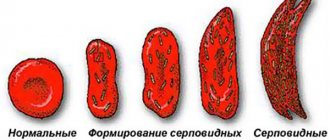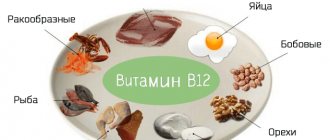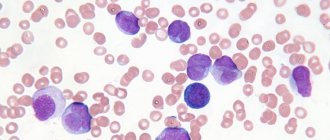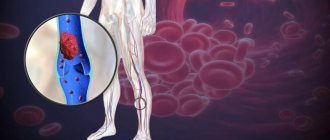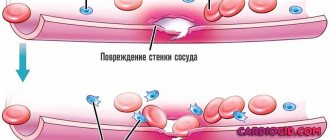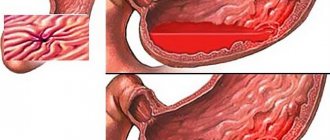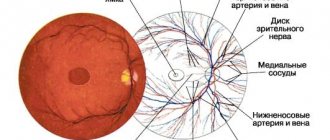One type of anemia is megaloblastic, or B12-folate deficiency anemia. This is a disease that develops as a result of a disruption in the maturation of erythrocytes due to a disruption in the synthesis of RNA and DNA in the cell, accompanied by the presence in the bone marrow of a large number of modified erythrocyte precursors - megaloblasts.
The incidence of megaloblastic anemia is 9-10% of all cases of anemia. It affects people of all ages, but it occurs more often in older people than in young people (4% and 0.1%, respectively). Megaloblastic anemia is a condition that can and should be treated. The causes, symptoms and treatment of this disease will be discussed in this article.
What are megaloblasts
These are modified red blood cells that are synthesized in DNA and RNA cells. Megaloblasts appear in bone marrow cells as a consequence of a deviation in the synthesis procedure. This occurs in morphological changes in the composition of cells.
Megaloblastic anemia is one of the modifications of folate deficiency anemia. This pathology must be treated.
Anemia, which is caused by a lack of folic acid, accounts for 10 of all cases of anemia pathologies.
People of all ages suffer from this disease, but in old age the percentage of diseases is higher than in young people and children.
Symptoms of the disease
blood picture with megaloblastic anemia
Any disease can manifest itself differently in different people, however, in relation to megaloblastic anemia, a leading triad of symptoms can be identified that will occur in almost all patients:
- Megaloblastic hematopoiesis, which is absent normally in the bone marrow, produces significant changes in the peripheral blood. Analysis shows:
megaloblasts and other changes in the blood
- anemia (anemia) - a decrease in the number of red blood cells - erythrocytes and a decrease in the level of red blood pigment - hemoglobin;
- hyperchromia (saturated color of enlarged red blood cells);
- poikilocytosis (change in the shape of red blood cells);
- anisocytosis: macrocytosis (large cells) and, to a greater extent, megalocytosis (the size of red blood cells can exceed 8 or even 12 microns);
- megakaryocytosis - the appearance of giant bone marrow cells with a large nucleus;
- normoblastosis - the presence in blood smears of nuclear forms of cells of the erythroid (red) series (as is known, red blood cells circulating in the peripheral blood do not have a nucleus);
- in red blood cells, remnants of a nuclear substance are noticeable (inclusions in the form of Jolly bodies or Cobot rings);
- In a blood test, the number of other formed elements may also be reduced: platelets, neutrophils, monocytes.
- Clinically, as well as during instrumental examination, signs of gastrointestinal damage are clearly visible:
- loss of appetite, weight loss;
- the gastric mucosa atrophies;
- hydrochloric acid in the gastric juice completely disappears (achlorhydria), because, due to atrophy of the mucous membrane, the parietal cells die and stop producing it (acidity of the gastric juice - 0).
- Due to a lack of cyanocobalamin, the nervous system begins to suffer for a long time, which is manifested by the formation of funicular myelosis (combined sclerosis). Clinically, symptoms of spinal cord damage are observed:
- paresthesia;
- sensory disturbance;
- paresis and paralysis;
- severe muscle weakness
It is obvious that this hematological pathology, accompanied by an exorbitant increase in red blood cells and changes in their nucleus, with progression and lack of adequate therapy, can make a person completely disabled. Disturbances in the formation of myelin due to B12 deficiency lead to very serious consequences: over time, not only superficial, but also deep muscle sensitivity is lost, “legs fail” (paralysis of the lower extremities), pelvic organs cease to function normally (urinary and fecal incontinence, impotence, etc.). d.). It is not for nothing that the term “malignant” has been preserved for pernicious anemia.
Classification of anemia by factor of occurrence
The causes of megaloblastic anemia depend on various factors:
- From a large volume of lost blood,
- From abnormalities in red blood cells,
- From the destruction of red blood cells.
This type of anemia is in the same position in the group of pathologies of anemia, together with non-megaloblastic anemia: anemia, which is caused by iron deficiency in the body, with the aplastic form of the disease, sideroblastic form of anemia.
This group of diseases is caused by diseases that are in a chronic stage. 10% of forms of anemia belong to this group.
It is difficult to diagnose anemia in this category, since most patients take B vitamins for various diseases of the body.
Division of megaloblastic anemias into types
Megaloblastic anemia is divided according to the criteria of abnormalities in the formation of red blood cells.
There are two types of disease:
Anemia associated with deficiency of vitamin B12 and folic acid:
- Lack of vitamins in the patient’s diet,
- Abnormalities in the absorption of substances occur in the intestines,
- The transport system during metabolism is disrupted,
- Increased need for vitamins in the body.
The second type of anemia, which is not associated with the level of B12 in the body, has been little studied by specialists, so the factors of its formation and development have not been established.
Vitamin deficiency in the body can be congenital or acquired. Acquired deficiency occurs due to the use of medications during long-term treatment of infection or viruses.
Megaloblastic anemia
Causes and symptoms of pathology
The first symptoms of megaloblastic anemia are:
- fatigue, muscle weakness;
- weight loss and appetite;
- diarrhea;
- nausea;
- cardiopalmus;
- tingling in the limbs, numbness.
Additional symptoms: abnormal pallor, difficulty walking, smooth tongue, muscle weakness. Symptoms of this disease may resemble normal anemia or other diseases. The sooner your child seeks help from a doctor, the sooner it will be possible to remove the consequences of this type of anemia.
Diagnosis of megaloblastic anemia is not carried out in a specialized manner. This type of anemia is usually detected by routine blood tests. This may include a complete blood count (CBC) and a test to check your folate levels. An auxiliary diagnostic tool is the Schilling test.
This test evaluates the body's absorption of vitamin B12. After the patient takes a special dose of vitamin B12, a urine sample is assessed after some time. If the amount of B12 in the urine is minimal or absent at all, the person is healthy. If the patient is not able to process this element, an increased amount of it is recorded in the urine.
Symptoms
Causes of megaloblastic anemia caused by a lack of folic acid
- Small amounts of vitamin in foods
- The process of vitamin absorption in the intestines is disrupted,
- Deviation in metabolism
- Increased acid consumption by the body.
Folic acid deficiency can be a congenital pathology, as well as due to taking a large number of medications during drug therapy for tuberculosis and viral diseases. Vitamin B12 is destroyed by alcohol and drugs.
Causes of anemia
B vitamins enter the human body with products of animal origin. In the stomach they bind to gastromucoprotein and are absorbed in the small intestine. For normal functioning of the body, the daily dosage of vitamin B12 should be 7 mcg.
The reserve of this vitamin in the liver is no more than 5 mg. The body's need for folic acid is about 100 mcg per day. Vitamin B9 supply up to 10 mg.
Vitamin B12 has two parts coenzymes.
If there is an insufficient number of megalocytes of the first part of the vitamin, then the process of non-ripening of erythrocyte cells occurs and a megaloblastic type of hematopoiesis occurs. In addition to the destructive effect of megaloblasts on red blood cells, there is also destruction in the synthesis of leukocytes and, during macrocytosis, destruction of platelets .
This influence of megaloblasts is not pronounced, which does not cause pathology.
Deficiency of the first part of the coenzyme (methylcobalamin) is characterized by a disturbance in the synthesis of methionine (amino acid). Methionine contributes to the normal functionality of the nervous system. An insufficient amount of this part of the megalocyte causes abnormalities in the central nervous system.
Deficiency of the second part of the coenzyme (deoxyadenosylcobalamin) provokes disturbances in the metabolic process of fatty acids; as a result of this disturbance, large amounts of toxins accumulate in the body, which paralyze the functioning of the spinal cord and the disease myelosis (funicular disease) develops.
Causes and symptoms of pathology
Those who carefully follow the recommendations of doctors are able to maintain good health, eliminating causes that can cause critical changes that provoke functional failure of many internal organs.
A person who leads a healthy lifestyle is much less likely to encounter various diseases, including the occurrence of anemia. It is also useful to understand that it is much easier to treat any disease if the initial stage of the pathology is confirmed during the diagnostic process. For this to happen, the patient must seek medical help as soon as symptoms indicating a health problem begin to appear. It is the doctors’ task to figure out what specific problems are developing, what treatment to organize in order to stop the destructive process.
Causes of pathology
Folic acid deficiency can be caused by:
- unbalanced diet;
- enteropathy, celiac disease (pathologies due to which there is poor absorption of nutrients and vitamins by the intestinal walls);
- absence of part or all of the small intestine (typical for patients who have previously undergone surgery during which resection was performed);
- helminthic infestation;
- dermatitis, psoriasis, pregnancy (under such circumstances, the body rapidly consumes vitamins, so it needs a sufficient supply);
- hemodialysis (during this procedure, vitamin B9 is also actively consumed);
- hepatitis, liver cirrhosis, pancreatitis;
- alcohol abuse.
With a lack of vitamin B12, pernicious anemia can also develop.
Refusal of protein foods can provoke anemia.
The reasons that provoke cyanocobalamin deficiency are the same ones that provoke a lack of vitamin B9, but they are additionally joined by the following unfavorable factors:
- refusal of protein foods of animal origin, which is typical for people who prefer vegetarianism;
- gastritis A;
- malignant pathology affecting the main organ of digestion - the stomach;
- multiple gastric polyps;
- enzyme deficiency (reduced transcobalamin II);
- Crohn's disease;
- resection (complete or partial) of the stomach.
Due to insufficient intake of B vitamins, the synthesis of genetic material is disrupted at the cellular level. As a result of this failure, red blood cell precursors are not able to ensure the normal transition from young to mature forms. Along with this, no disruption is observed during the development of the cytoplasm, therefore such circumstances favor the emergence of abnormally large cells, called megaloblasts in medicine.
In patients suffering from megaloblastic anemia, there is a malfunction of the nervous system, the metabolism of fatty acids is disrupted, which leads to an increase in the level of total toxins that affect the spinal cord.
Symptoms
Symptoms of this type of anemia can be varied. In medicine they are usually divided into 4 groups:
- symptoms of myelosis;
- signs of digestive tract disorders;
- circulatory-hypoxic syndrome;
- psychoneurological pathologies.
Patients should pay special attention to their health if they exhibit the following symptoms:
- loss of appetite;
- persistent aversion to meat products;
- loss of taste;
- unpleasant sensations on the tongue (tingling, tingling);
- vomiting and nausea;
- intestinal disorders;
- headache;
- numbness of legs and arms;
- unsteady gait;
- excessive fatigue in the absence of any load;
- dyspnea;
- increased heart rate;
- heartache;
- change in skin tone (acquisition of characteristic yellowness);
- convulsions;
- irritability;
- hallucinations;
- instability of attention.
Anemia is accompanied by many symptoms, from fatigue to nausea and vomiting.
The disease occurs in subclinical and clinical stages. At the subclinical stage, most often patients do not notice any critical changes, so the disease can be detected by chance. At the clinical stage, signs appear that clearly indicate that the functioning of the internal organs and vital systems of the human body is impaired.
Megaloblastic anemia is anemia that occurs due to megaloblastic transformation of eryphopoiesis due to disorders of DNA synthesis caused by vitamin B12 deficiency or lack of folic acid. Both men and women suffer from this type of anemia equally often, mainly elderly people. Folate deficiency anemia occurs more often in young people and pregnant women.
Vitamin B12 deficiency is caused by a violation of its absorption in the digestive system, caused by diseases of the stomach (the synthesis of intrinsic factor of Castle is impaired), small intestine and competitive absorption of cyanocobalamin in the intestine. Of decisive importance is the occurrence of atrophic gastritis and, as a consequence, a decrease in the production of hydrochloric acid, pepsin and internal factor Castle, which is a gastroglycoprotein and secreted by the parietal cells of the fundus of the stomach.
Every day, 3-5 mcg of vitamin B12 enters the human body with meat, liver, milk, cheese, and eggs. In the duodenum, vitamin B12 (cyanocobalamin, external Castle factor) binds to gastroglycoprotein, and in this state it enters the small intestine, where it is absorbed. After passing through the intestinal wall, vitamin B12 combines with the transcobalamin protein, which delivers it to the depot organs: liver, bone marrow.
If absorption in the intestine ceases, its reserves last for 3-5 years. Cyanocobalamin deficiency due to nutritional disorders rarely develops, as a rule, in vegetarians who completely avoid consuming animal products. The main causes of vitamin B12 deficiency include:
- violation of the secretion of internal factor - with atrophy of the gastric mucosa (caused by hereditary, toxic, immunological factors), gastrectomy, partial resection of the stomach;
- diseases of the small intestine - with tumors, enteritis, enteropathies, intestinal resections, hereditary anomalies;
- competitive absorption of B12 in the intestine by microflora - with cecal syndrome, dysbacteriosis, helminthic infestations, as well as with pancreatitis, hereditary anomalies of transcobalamin synthesis, etc.
The reserves of folic acid in the body are limited, so its deficiency develops quite quickly. With an inadequate diet (increased feeding of children with goat milk, removal of greens, vegetables, fruits from the diet), malabsorption (cecal syndrome, diarrhea, intestinal infections), increased need for these substances (increased growth, pregnancy), folate deficiency anemia develops after 2 -4 months.
Folic acid is absorbed in the small intestine without the participation of additional mechanisms. Long-term use of alcohol, certain anticonvulsants, phenobarbital, aminopterin, which are analogues or antagonists of folic acid, can also cause the rapid development of folic acid deficiency in the body.
Cyanocobalamin ensures the normoblastic type of hematopoiesis by directly participating in the synthesis of thymidine monophosphate, which is part of DNA; its deficiency disrupts DNA synthesis and mitotic processes in cells, while the bone marrow primarily suffers as an organ in which the processes of cell division are more active.
Giant forms of cells of all three germs of hematopoiesis appear, a megaloblastic type of hematopoiesis arises, which is characterized by a reduction in the lifespan of red germ cells and increased decay of megaloblasts. Vitamin B12 is also involved in fatty acid metabolism. With its deficiency, toxic methylmalonic and propionic acids accumulate in the body, and myelin synthesis is disrupted.
Folic acid is used in the synthesis of purine and pyrimidine compounds - components of DNA and RNA, activates the processes of cell division and protein synthesis, etc. Thus, folic acid stimulates erythro-, leuko- and thrombocytopoiesis, plastic and regenerative processes in tissues.
Typical forms of B12 deficiency anemia are characterized by the classic triad of symptoms:
- damage to the hematopoietic system,
- damage to the digestive system,
- damage to the nervous system.
In addition to the general anemic syndrome, B12-deficiency anemia is characterized by numbness, pain in the extremities, hypo- and hyperesthesia, and a sensation of “pins and needles” on the skin. Deep sensitivity is impaired, and sometimes mental disorders occur: depression, memory impairment. All these manifestations are a consequence of impaired myelin synthesis (funicular myelosis syndrome) and intoxication of the central nervous system.
In addition, there are signs indicating atrophic changes in the digestive system: dyspeptic disorders (decreased appetite, diarrhea, constipation). A third of patients experience pain in the tongue. During the clinical examination, you need to pay attention to mild jaundice of the skin (megalo- and macrocytes have a shorter lifespan and are quickly destroyed in the spleen), smoothness of the papillae of the tongue (“varnished” tongue), hepato- and splenomegaly.
The clinical picture of folate deficiency anemia is dominated by a general anemic symptom complex, moderate jaundice, hepato- and splenomegaly. In this case, atrophic gastritis and changes in the tongue are observed. There are signs of enteritis or other intestinal diseases; there are no symptoms of funicular myelosis, but other diseases of the nervous system (epilepsy, schizophrenia) are diagnosed, which is the reason for long-term drug treatment of such patients.
Megaloblastic anemia belongs to a heterogeneous group of diseases that are characterized by common morphological characteristics: large cells with impaired nuclear maturation. The immaturity of nuclei is determined by the ratio of their state to the maturity of the cytoplasm. These cells, which can be seen in bone marrow cells, are called megaloblasts.
Symptoms of megaloblastic anemia
The symptoms of megaloblastic anemia have been studied based on Addison-Biermer disease.
It is classified into two stages of pathology development:
- Preclinical initial stage of the disease, symptoms are not expressed. The detection of this type of anemia may be incidental, according to the results of clinical studies,
- Clinical stage of megaloblastic anemia with typical signs of deficiency of B vitamins in the blood.
Signs and distinctive features of megaloblastic anemia
The main symptoms of this type of anemia are:
- Severe dizziness
- Weakness of the whole body
- Unreasonable absence of food intake,
- Nausea,
- The process of inflammation of the oral cavity,
- Burning sensation on the tongue
- Stomatitis,
- Yellow tint to the skin (the tint gives a high level of bilirubin in the blood).
But it can also be divided into 4 types of signs of megaloblastic anemia: diseases in the neurological department, hypoxic (oxygen starvation of the body) disorders, pathologies in the brain, disorders of the gastrointestinal tract.
When a disease occurs in the neurological department, the following characteristic features will be present:
- Biermer anemia, Addison-Beermer disease,
- Mild tingling in fingers and toes
- Constant feeling of chills
- Unsteadiness in movement
- Numbness in the lower extremities,
- Lethargic legs
- The sensitivity of the skin disappears,
- Difficulty in movement.
If the pathology is in the brain, the following are possible:
- Lack of memory
- Hallucinations,
- State of being lost
- Overexcitement,
- Feeling of constant irritation
- Coma state
A lack of vitamin causes the destruction of the protective covering of the spinal cord.
In case of hypoxic (oxygen starvation of the body) disorder:
- Pale skin tone
- Erythropoiesis (the process of creating red blood cells in the bone marrow),
- Peeling on the skin,
- Shortness of breath with slight physical exertion,
- Accelerated contraction of the heart muscle,
- Arrhythmia,
- Angina pectoris
- Swelling,
- Chest pain.
When there is a gastrointestinal tract disorder, the following symptoms are observed:
- Aversion to meat food
- Vomit,
- Nausea,
- Diarrhea,
- Decreased appetite
- Hunter's atrophic glossitis - pinching and pain on the tip of the tongue, loss of taste buds.
Particular attention should be paid to older people. Few of them, even with significantly low hemoglobin readings, do not seek help.
Anemia in children
This pathology can develop in children whose mother suffered from this disease during pregnancy. Premature birth can lead to the development of this anemia in children. In such children, megaloblastic anemia is diagnosed immediately after birth or by 3 months of age.
Multiple pregnancy can also contribute to the development of megaloblastic anemia in children.
Symptoms and clinical signs
Megaloblastic anemia is divided into 2 stages:
subclinical, in which symptoms do not appear (the patient feels slightly unwell);
clinical, the symptoms of which are clearly expressed.
Manifestations of the disease can be divided into 4 groups:
Signs of gastrointestinal damage
Symptoms appear due to atrophic changes in the mucous membrane of the stomach or intestines, insufficient production of enzymes, which causes disturbances in the digestion and absorption process. This group of symptoms includes:
- aversion to food, especially meat;
- decreased or loss of appetite;
- atrophic glossitis (pain in the tip of the tongue, burning, impaired taste, the presence of a specific coating on the tongue);
- feeling of nausea, vomiting;
- digestive disorders.
Symptoms of funicular myelosis
- migraine;
- discomfort in any part of the skin;
- change in gait;
- chills;
- weakness in the legs;
- paresis, paralysis.
Circulatory-hypoxic syndrome
- general weakness;
- excessive fatigue;
- shortness of breath (even in a state of complete rest);
- cardiopalmus;
- heart pain;
- pallor of the skin (sometimes the skin acquires a yellow tint).
Psychoneurological symptoms
- irritability;
- development of hallucinations;
- convulsions;
- significant decrease in mental abilities.
Diagnostics
Based on the results of a general blood test, it is possible to determine megaloblastic anemia in the preclinical stage, when the patient does not feel any signs of malaise.
General blood analysis
The analysis shows the following composition in the blood:
- The quantitative index of erythrocytes is reduced,
- Large red blood cells
- Color level not less than 1.1,
- Hemoglobin index is low,
- Poor quality of red blood cells in the molecules there are remnants of the nucleus,
- Low reticulocyte count (cells that are the precursors of red blood cells in the process of hematopoiesis),
- Low neutrophil ratio,
- Reduced platelet count,
- Deviation from the norm towards a strong increase in all cells.
After checking the blood composition using a general analysis, the doctor may prescribe a more complete examination.
During the examination, special attention should be paid to the following visible signs of the disease:
- Skin color turned parchment
- The tongue became varnished, and its size increased,
- Tachycardia,
- Murmurs in the myocardium,
- Splenomegaly, larger spleen,
- Signs of myelosis according to neurological diagnostics.
A biochemical test reveals in the blood: bilirubin, with an overestimated index, and a high presence of lactate dehydrogenase in the test fluid.
A folic acid test is required.
Bone marrow puncture
Study by bone marrow puncture. Megaloblasts were found in the substance studied by this method. Using a puncture, you can accurately determine the deficiency of vitamins such as B12 and B9.
Tests are also carried out: for the presence and volume of folic acid in biological fluid, checking stool for worms, x-ray of the gastrointestinal tract (gastrointestinal tract), as well as ultrasound (ultrasound examination) of internal vital organs.
According to the results of ultrasound of the gastrointestinal tract, with this type of anemia, atrophy of the walls of the gastric mucosa or a separate part of it is detected, and a reduced coefficient of hydrochloric acid concentration in the stomach.
Study of megaloblastic anemia in children
A diagnosis of megaloblastic anemia in a child’s body can only be made through a comprehensive examination of the child and consultation with highly specialized specialists: a rheumatologist, a gastroenterologist, and a nephrologist.
To establish a diagnosis, the following is carried out:
- Biochemical analysis of blood composition,
- Ultrasound check of the kidneys,
- Ultrasound of internal vital organs throughout the gastrointestinal tract.
Megaloblastic anemias
Diagnostics
Megaloblastic anemia can be suspected already with the first general blood test (CBC). Since even the most modern (“sophisticated”) analyzers are not able to detect those morphological changes in red blood cells (see above) that are characteristic of this pathology, the study should not be trusted solely to the device, even the most “smart” one. Although he, too, will probably reveal some shifts in the KLA. Usually, any self-respecting laboratory adheres to “gold standards” and the smear is necessarily examined by a doctor under a microscope. However, the disease is not a random finding, so the primary diagnosis is based on the patient’s complaints and clinical symptoms:
- Weakness, fatigue, decreased overall physical activity and ability to work;
- Occasional darkness in the eyes;
- Decreased blood pressure (hypotension);
- Frequent dizziness and headaches;
- Cardiopalmus;
- Signs of changes in the oral mucosa such as glossitis;
- There may be an increase in the size of the spleen (splenomegaly) and liver (hepatomegaly);
- Swelling of the legs;
- Tendency to diarrhea, although constipation is also possible, that is, these unpleasant conditions can alternate with each other;
- Loss of appetite, taste disturbances, hence weight loss.
A more in-depth diagnosis will follow:
- Biochemical blood test (BAC) - it will show an increase in unconjugated (unbound) bilirubin, and also, most likely, a change in serum iron levels and lactate dehydrogenase - LDH values;
- FGDS (fibrogastroduodenoscopy), which will determine the condition of the gastric mucosa (signs of atrophy);
- Spinal cord puncture, since laboratory signs are similar to those of hemolytic and aplastic anemia;
- Differential diagnosis - clarification of the form of megaloblastic anemia (B12 deficiency, folic acid deficiency or a combined variant).
Timely diagnosis of megaloblastic anemia is very important for the patient’s health, because delay or diagnostic error (fortunately, this happens extremely rarely) can lead to the development of anemic coma. The clinical picture is quite severe: the patient does not regain consciousness, breathes heavily, his pulse is noticeably increased, blood pressure is reduced, the skin has a lemon tint (with pernicious anemia, increased hemolysis of blood cells is possible), and tonic and clonic convulsions may appear. The patient may die...
Treatment
Once an accurate diagnosis is made, it is necessary to begin urgent drug treatment. In the case of an etiological cause of anemia, it is necessary to eliminate it.
The cause is helminths (parasitic worms that are found in the human body) eliminated by deworming.
Disease factor, polyps are removed surgically.
The cause is gastric cancer, surgical intervention.
Treatment of intestinal pathologies, abstain from drinking alcoholic beverages and smoking, and taking narcotic substances is strictly prohibited.
In addition to eliminating the factors of the etiological disorder, the patient simultaneously needs to pay special attention to nutritional culture. A diet is necessary when treating megaloblastic anemia.
Table of foods that contain the highest amount of folic acid:
| Products containing B9 (folic acid) | Coefficient in µg |
| beef liver | 240 |
| cod and its liver | 110 |
| green spinach | 80 |
| walnuts | 78 |
| hard cheese | 25,0- 50,0 |
| concentrated milk (powdered) | 30 |
| rye grain flour | 55 |
| cereal rice | 19 |
| beetroot vinaigrette | 13 |
List of food products containing the largest amount of vitamin B6
| Products containing B12 | Coefficient in µg |
| beef (liver) | 60 |
| pork (liver) | 30 |
| chicken (liver) | 17 |
| beef liver (heart) | 25 |
| beef kidneys | 20 |
| fresh herring | 13 |
| fresh mackerel | 12 |
| fresh sardine | 11 |
| seafood - mussels | 12 |
Pathogen therapy
Treatment of megaloblastic anemia with vitamin B12 deficiency involves the use of single drugs.
Pathogenetic treatment of megaloblastosis is that cyanocobalamin is introduced into the blood by the parenteral method. The required dosage depends on the composition of the biological fluid and ranges from 200 mcg to 1000 mcg.
The course of such therapy involves the use of cyanocobalamin until the onset of hematological remission. If the dynamics of therapeutic treatment are positive, the dosage of the drug must be reduced.
You need to take cyanocobalamin until a normal hemoglobin level in the blood is established.
Remission may occur after a week of therapy. At the initial stage of therapy, the reticulocyte index increases by 3%. Gradually return to normal: red blood cells, leukocytes, platelets and hemoglobin. The color decreases.
If after a blood test (check) all indicators do not deviate from the standard, then maintenance therapy with cyanocobalamin is used.
Dosage no more than 200 kg for 7 calendar days.
For Addison-Biermer disease, vitamin B12 is taken continuously throughout life.
Prevention
Measures as such have not yet been developed. However, there are some things you can do:
- Building the right diet. There should be a sufficient amount of meat, liver, fish, and vegetables. You need to maintain a nutritious diet for a long time. This is not a diet, but a new approach.
- Regular preventive examinations with a hematologist or at least a therapist. With blood picture control.
- It is advisable for patients after an illness to undergo courses of artificial administration of vitamin B12. 10 injections every six months. If the cause cannot be found or it cannot be eliminated, the person is treated in this way for the rest of his life.
- It is important to undergo a course of treatment for the underlying disease that caused the pathological process in question. This can be challenging given the difficulty in diagnosing some of the likely culprits.
Changes in blood composition in megaloblastic anemia
In cases where funicular myelosis develops due to anemia, the dosage of the B12 drug is increased. The volume of the administered drug is reduced when the symptoms of neurological abnormalities have completely disappeared.
When megaloblastic anemia has become a severe disease and the patient is in a coma, then the use of blood transfusion is effective. This method of introducing purified red blood cells into the body.
For an autoimmune disorder, glucocorticoid drugs are administered.
In mild cases of folic acid deficiency in the blood, medications are administered orally. The daily dosage of the medication is no more than 1-5 mg.
Treatment of other diseases starting with the letter - m
| Treatment of malaria |
| Treatment of manic-depressive syndrome |
| Treatment of Marseilles fever |
| Treatment of mastitis |
| Treatment of mastopathy |
| Treatment of meningococcal infection |
| Migraine treatment |
| Treatment of multiple myeloma |
| Treatment of skeletal myeloma |
| Treatment of mycosis of the lungs |
| Treatment of mycoplasmosis |
| Treatment of myocarditis |
| Treatment of thrush |
| Treatment of urolithiasis |
The information is for educational purposes only. Do not self-medicate; For all questions regarding the definition of the disease and methods of its treatment, consult your doctor. EUROLAB is not responsible for the consequences caused by the use of information posted on the portal.
